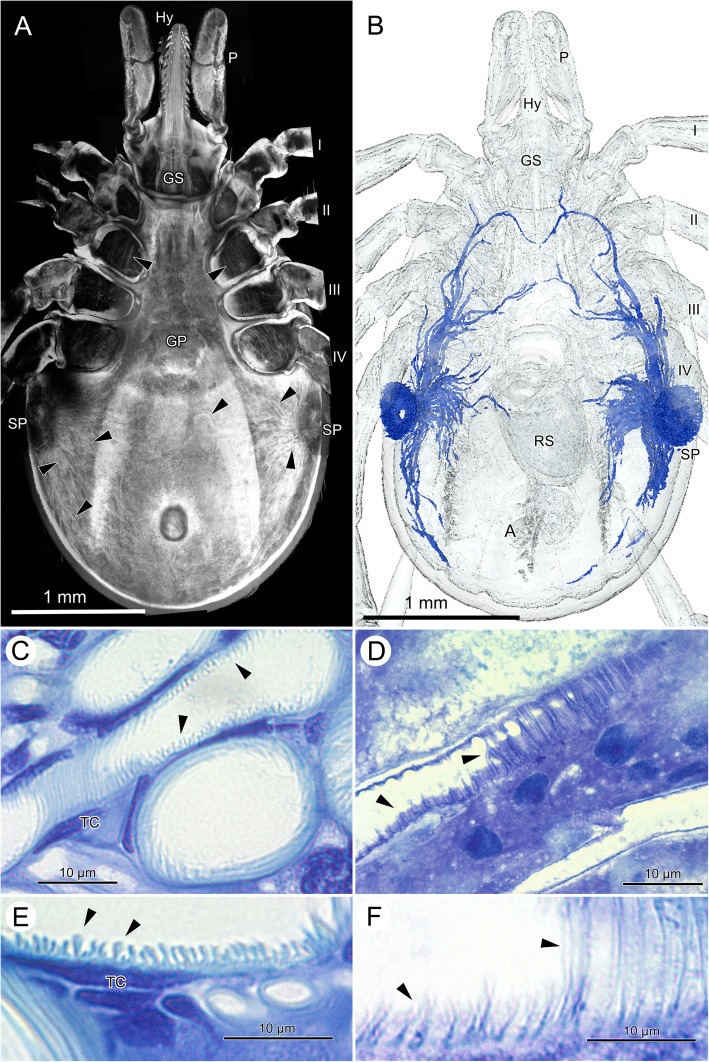Fig. 6.
Ixodes ricinus, cross morphology and histology of the tracheal system. a Autofluorescent CLSM image of the tracheal system, macerated specimen; ventral view; arrowheads indicate tracheae. b 3D-reconstruction of the major tracheal trunks based on μCT-image stacks; ventral view. Tracheae are modeled in blue. The spatial resolution of the μCT-images is about 15 μm to recognize individual tracheae, therefore only tracheae larger than 15 μm are shown. c LM micrograph with longitudinal and cross-sectional sections of tracheae from a fasting animal; arrow-heads indicate taenidia. d LM micrograph with longitudinal sections of tracheae from a fully engorged animal. Note that the taenidia are almost completely flattened as compared to (c); the un-stretchable core of exocuticle in the taenidia can be recognized as a straight lightly stained line; arrowheads indicate taenidia. e High-power LM micrograph of the tracheal wall, showing the taenidia in an unfed tick. f High-power LM micrograph of the tracheal wall, showing the taenidia in a fully engorged tick. Abbreviations: A, anus; GP, genital plate; GS, gnathosoma; Hy, hypostome; P, pedipalp; RS, receptaculum seminis; SP, spiracular plate; TC, tracheal cell; I–IV, legs

